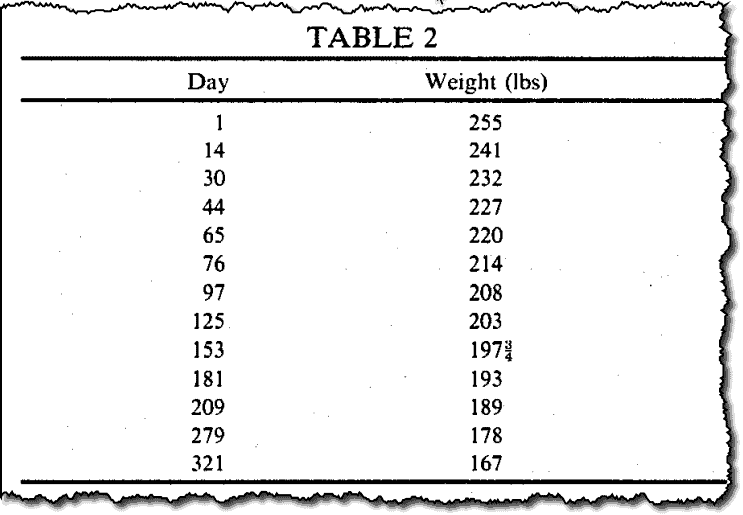
And the key is what time of day you use this light
—-Important Message From Our Sponsor—-
Hi, I’m Isabella, and I have a dark secret…

I LOVE when a man REALLY knows how to give me what I need in bed…
In fact, I’m obsessed with it… to the point that I will stay with any guy…
…even if he’s a complete jerk…as long as he can satisfy me in bed…
And I know tons of other women who do the same thing.
We forget about all other men as soon as we find one who can last long enough to pleasure us properly in the bedroom.
So if you’re a man and you want to be the ONLY guy your woman ever thinks about…
…here’s what you need to do to rock her world in bed…
WARNING: Contains Triggers
(Just be careful because I know girls who have gone PSYCHO over guys who do this!)
———-
This is the light frequency that melts off fat
Every cell in the body is affected by exposure to light.
Cells in the eyes are especially sensitive to light.
These cells send information to other parts of the body, controlling a vast number of biological processes.
Bodyweight and fat mass are known to be affected by light exposure.
In one study, researchers found that the timing of bright light exposure might account for up to 1/3 of the differences in body mass index.
The study indicates that getting bright light earlier in the day could help people lose weight.

The human study was carried out at Northwestern University, Feinberg School of Medicine, Chicago, Illinois, United States of America. The results were published in the journal PLoS One.
Exposure to bright light early in the day can improve sleep.
Minimizing bright light exposure late in the day also improves sleep.
People who have better sleep tend to be leaner.
“Light exposure can influence sleep and circadian timing, both of which have been shown to influence weight regulation.”
These facts made researchers curious about the timing of bright light exposure on body mass index — a rough measure of how much body fat people carry.
“The goal of this study was to evaluate the relationship between light, sleep and body mass index.”
The researchers recruited 54 people. All of the recruits were fitted with a wrist device which recorded their sleeping patterns.
The device also measured the intensity of light that the individuals were exposed to over the course of 24 hours.
Light exposure and sleeping patterns were tracked for a week.
“Light levels, sleep midpoint and duration were measured with wrist actigraphy (Actiwatch-L) for 7 days.”
The researchers recorded the height and weight of all of the participants.
The body mass index BMI of the participants was calculated using the height and weight data.
“BMI was derived from self-reported height and weight.”
Light intensity is measured by lux.
The researchers took all of the points in time where individuals were exposed to bright light of 500 lux or more.
They then calculated the mid-point of these bright light exposure peaks.
Everyone in the study was assigned a time of day according to their bright light exposure peak time.
“The mean light timing above 500 lux was defined as the average clock time of all aggregated data points above 500 lux.”
When they compared average peak light exposure time against body mass index they found a strong relationship.
“Mean light timing above 500 lux was a significant predictor of body mass index.”
The time at which people get most of their exposure to bright light can tell you how fat or lean they are.
People with lower body mass index (BMI) generally carry less body fat.
Things like muscle mass and mass also play into BMI, but body fat is usually the major factor.
People whose average bright light exposure was at 8 AM had an average BMI of 18.
Average bright light exposure of 3 PM was associated with an average BMI of 26.
Getting bright light earlier in the day was associated with less body fat.
Unsurprisingly, the timing of average bright light exposure had a significant effect on people’s sleeping patterns.
“Mean light timing above 500 lux was positively correlated with the midpoint of sleep.”
Exposure to bright light earlier in the day improves sleeping patterns and is associated with less body fat.
The researchers found that light exposure could account for up to 1/3 of the variations in body mass index.
“The full model accounted for 34.7% of the variation in body mass index.”
Light exposure is a significant factor in sleep quality, sleep timing, and body mass index. The effect of light on body weight is not dependent on its effect on sleep timing.
“Exposure to moderate levels of light at biologically appropriate times can influence weight, independent of sleep timing and duration.”
You should always consult a healthcare practitioner about treating and diagnosing health-related problems.
—-Important Message—-
1930s method lets men “breathe” the fat out as carbon dioxide
Take a look at this study result from the 1930s, for an “average” man’s loss of fat:

In 14 days, most of the men were down 14 pounds.
And by day 30, another 10 pounds.
Their fat was just melting away, and being replaced by firm, strong muscles.
And this wasn’t unusual, it was TYPICAL.
These men did NOT diet, they did NOT exercise…
They ate what they wanted and never even felt hungry anymore.
No more cutting calories.
No more counting carbs.
And no more skipping meals.
Here’s the 1930s method that lets you “breathe” the fat out.
———-

Timing and Intensity of Light Correlate with Body Weight in Adults
https://journals.plos.org/plosone/article?id=10.1371/journal.pone.0092251
